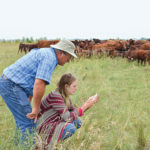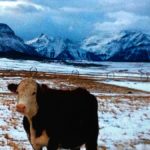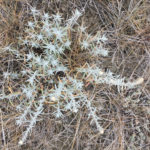
Pasture

La bendición
Straight from the hip with Brenda Schoepp
There is a little sign in the garden of my friend Gabriel in Cuba. It reads “La bendición” or translated — the blessing. I met Gabriel while training in permaculture food production in Cuba. We seemed to know each other from a past life and were immediately close friends. His beautiful family radiates their love […] Read more

W.A. Ranches’ gift to veterinary medicine and bovine health
The ranch will be home to the University of Calgary’s beef research and extension programs
Students at the University of Calgary’s faculty of veterinary medicine receive hands-on experience at various beef operations. In many ways it’s been a successful approach — after only 10 years, the University of Calgary vet college is ranked among the top 50 vet schools globally. But conducting research at partnering cow-calf operations poses challenges for […] Read more

Beware of toxic plants in pastures
There are many toxic plants in Western Canada cattle producers need to steer clear of
Different regions have different problem plants, and to make it even more confusing these same plants are only toxic if eaten in certain amounts or in certain stages of growth, while others are toxic at all times. Rachel Turnquist, a forage extension specialist in Saskatchewan, says there are many toxic plants in Western Canada. You […] Read more

Put the land first… and everything else will follow
Rotational grazing setup uses 16, eight-acre paddocks that cattle move through on four-day intervals
When Brian Harper first witnessed high stock density or “mob” grazing, his reaction was “there is no way I am moving cattle two to three times a day.” Yet the beneficial impact on the land from this approach ultimately convinced Harper that it could fit into their operation. He had already seen an improvement when […] Read more

Electrified irrigation wheel line offers several benefits
“The electrified wheel line has been a big asset to make our haylands last longer...”
A rancher in southwestern Alberta has created an innovation that allows an irrigation wheel line to perform double duty. David Armitage, who ranches on his family’s operation at Mountain View, Alta., close to Waterton Lakes National Park, discovered that rather than continually move conventional electric fences to rotationally graze his hayland, he could work with […] Read more

Deere mega-dealership buys into Red Deer market
A central Alberta John Deere dealership which billed itself as “one of the few independently owned” dealers in the region is set to join Cervus Equipment. Calgary-based, publicly-traded Cervus announced Friday it will buy Red Deer-based Deermart Equipment Sales for an undisclosed sum. Deermart, owned by John Donald, Jack Donald and Abe Derksen since 1982, […] Read more

Strategies for year-round grazing
With careful forage management, cattle can harvest their own feed year-round
Winter feeding is the biggest input cost when raising cattle, so many producers try to minimize the number of days they have to feed hay. In some situations, with careful forage management, cattle can harvest their own feed year-round, especially in mild climates. Even in northern climates with cold weather and snow, year-round grazing can […] Read more

Polycrop grazing goes under the microscope
Research: News Roundup from the November 2018 issue of Canadian Cattlemen
Those wondering about polycrop potential to sequester carbon, improve soil health and benefit animal performance will have some answers by the fall of 2019 thanks to research underway at the University of Saskatchewan. Jacqueline Toews, a graduate student in the College of Agriculture and Bioresources, is halfway through a two-year study comparing the costs and […] Read more

U.S. judge orders next glyphosate cancer trial for March
Reuters — A California judge on Thursday granted an expedited trial for March in the case of a couple suffering from cancer who sued Bayer’s Monsanto unit, alleging the company’s glyphosate-containing herbicide Roundup caused their disease. The order by Superior Court Judge Ioana Petrou in Oakland, Calif. comes on the heels of a $289 million […] Read more

The Matador Community Pasture: A unique educational experience
Nutrition with John McKinnon
One of the privileges of a faculty position at a Canadian university is the interaction one has with undergraduate students. In my case, I co-teach a class where we take students on a seven-day tour of livestock operations across Western Canada. We cover everything from hogs to dairy, bison, chickens, meat and milk processing, and […] Read more



